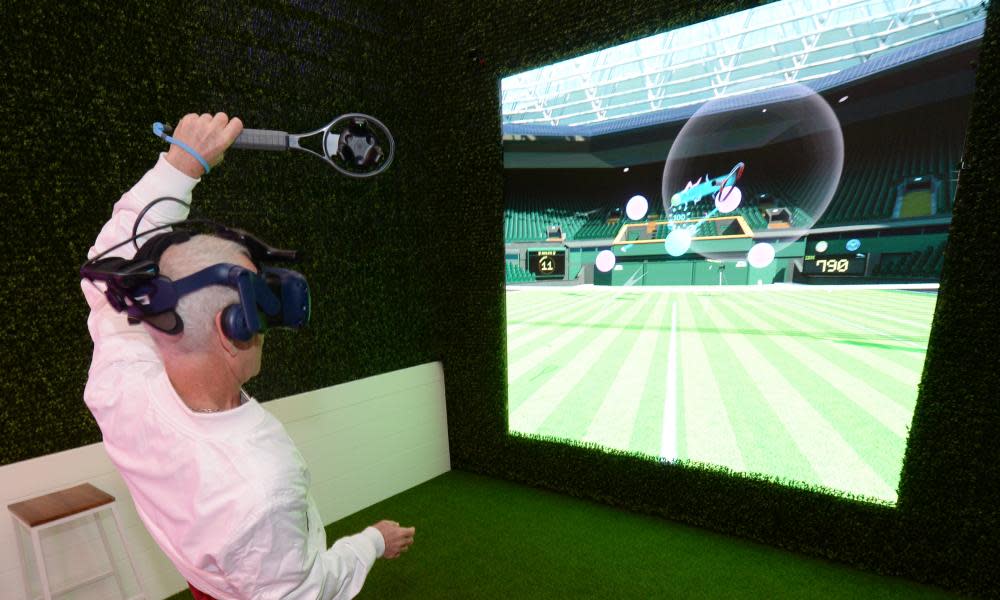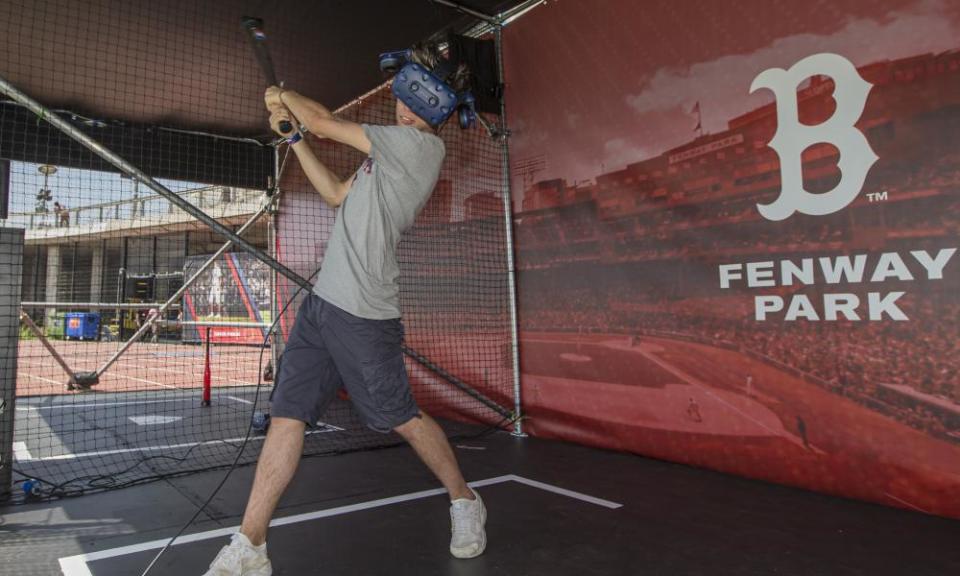AI flushed by poker success but athletes can reap benefits of virtual reality

And still the machines rise. First chess was conquered. Then Go. Now, as revealed in the journal Science last week, artificial intelligence has cracked the most popular form of poker, six-player No-Limit Texas Hold’Em, by self-playing thousands of hands against itself to learn which strategies worked – and then applying them in real games against professionals.
The results were startling. After playing 10,000 hands of poker against more than a dozen top pros across 12 days, the Pluribus – a program designed by researchers at Carnegie Mellon University and Facebook AI – would have made about $1,000 an hour if playing with $1 chips, researchers calculated.
Related: My poker face: AI wins multiplayer game for first time
This, clearly, was a major breakthrough. For not only was it the first time that AI had beaten top professionals in any major game involving more than two players, but as poker also involves hidden information – as no one knows their opponents’ cards – and bluffing it was much harder for computers to solve. As the professional player Jason Les, one of those slaughtered by Pluribus, put it: “I was defending humanity’s dominance in this game. Unfortunately I failed.”
The breakthrough was announced in the same week that a system known as TrackMan, which uses radar to determine whether a baseball pitch has reached the strike zone, made its professional debut during the independent Atlantic League’s all-star game. True, an in-stadium umpire was allowed to overrule its decisions. But here was another sign of technology encroaching into spaces previously occupied only by humanity.
Yet when I spoke to Demis Hassabis, the brilliant designer of AlphaGo and AlphaChess, about the dangers of technology recently he was dismissive of the possibility of our future machine overlords one day ruling over us. “I don’t see a shred of intelligence that AI will take over despite this anxiety and fear among the public,” he told me. “This is a Hollywood dystopian view. In reality I believe it is much more likely that we and computers will collaborate for the benefit of humanity.”
The latest evidence that Hassabis might be right comes from scientists in Canada, who published an intriguing study this month about how virtual reality has improved basketball players’ decision making. The starting premise for the academics at Bishop’s University was that in many sports, teams and players are increasingly studying videos of themselves, their opponents and potential “plays” to learn. However, they wanted to find out if using virtual reality headsets could improve decision making over and above using video analysis on a computer screen because the whole process was more immersive.
To do this the academics took 27 varsity-level basketball players, split them into three groups: one that used VR headsets in which viewers could see a full 360-degree scene which adjusted in real time; another that watched videos of specific plays; and a third control group.
To start with all players did a number of pre-tests on a real basketball court to assess their decision-making skills. Then they underwent four days of training in the laboratory, with the VR and video group both watching the same 200-play custom videos over four days (80 of which were shown twice, and 40 once) while the control group watched 15 minutes of college basketball.

At the end of the each clip, participants were asked “Where would you move to best help your team succeed in a scoring a basket?” – and then given 10 seconds to decide whether to move left, right, forward or stay put, before being ranked based on their decision.
After four days, all 27 players were tested on a real court with nine other players, who went through a series of plays. At the end of each one participants were asked to move to a location on the court that would best help their team score points, either by receiving a pass or moving to the best position. As in the training sessions, there had the same four choices.
Some of the plays were “trained” – that is, the participants had seen them before either on virtual reality or on video. Others, however, were “untrained” – and had not been seen in the training sessions.
The results were fascinating. Unsurprisingly for the trained plays, virtual reality and video groups “significantly outperformed the control group”, with the VR group attaining 79.5% accuracy, the video group 73.2% and the control group third on 57.5%.
Related: 'I'm riding Le Tour in my spare room': the indoor cycling revolution
But the biggest disparity came when scientists looked at untrained plays. Here the virtual reality group “significantly outperformed” those in the video and control groups – with a 78.9% decision accuracy score compared with 60.9% and 60.2%.
So why did the virtual reality group do so much better? The likeliest reason, the researchers believe, is the videos presented in the VR headset looked closer to what would be perceived on a real basketball court and therefore were more immersive. But whatever the reason, they believe: “The superior gains obtained with virtual reality simulation combined with the enhanced accessibility of this technology make it a very appealing strategy to further optimise the development of athletes.”
Meanwhile those hoping to make their fortune on online poker by getting hold of Pluribus are likely to be disappointed. Tuomas Sandholm, the scientist behind the machine, has founded two companies – Strategic Machine Inc and Strategy Robot Inc – which have exclusively licensed the technologies used to win at poker. Who knows what they might conquer next?

 Yahoo News
Yahoo News 
